|

How do you know if the crayfish is male or female?
Well, even the experts have hard time when it comes to sex the crayfish from
a dorsal view and without handling them (although, in general, males are bigger than females and males have bigger claws).
See,
crayfish are dimorphic which means that yes you could differentiate a male from a female. But to do so, you need to look them
from a ventral view, which may require some handling. Males have the first pair of swimmerets modified as a copulatory organ.
They use this gonopod to transfer sperm into the female. Females will not have these structures but instead will have an opening,
seminal receptacle, which you could see ventrally between the third and fourth pair of walking legs. Now, some species are
more dimorphic than the others. So, yes you could have a species where there are color differences between sexes but if you
don't know which one is which then you still need to manipulate the crayfish to find out.
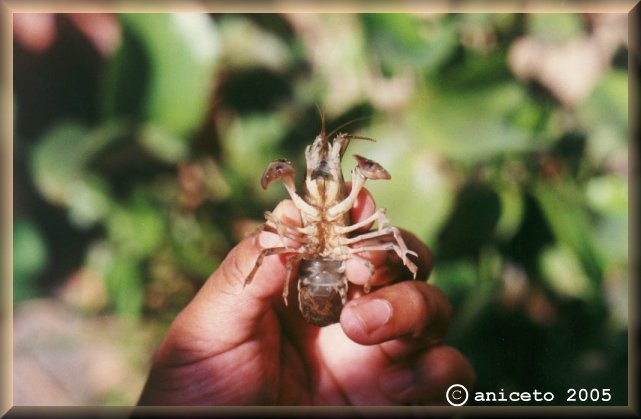
Is there a courtship behavior in crayfish?
Believe it or not, fighting is part of the "courtship" behavior. There is
some risk involved, but most crayfish do fine after some confrontations.
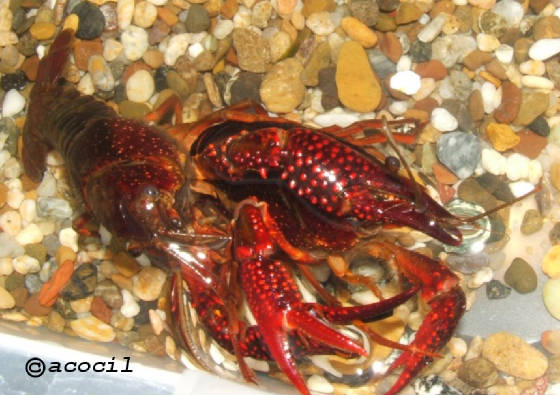
How long does it take for the eggs to hatch?
Assuming that the eggs were fertilized, then it will take them a month or so to hatch.
You will have from 100 to 300 little juveniles. Ten percent survive the first year under good conditions. If you could not
keep them in captivity it is not recommended to release them to the wild.
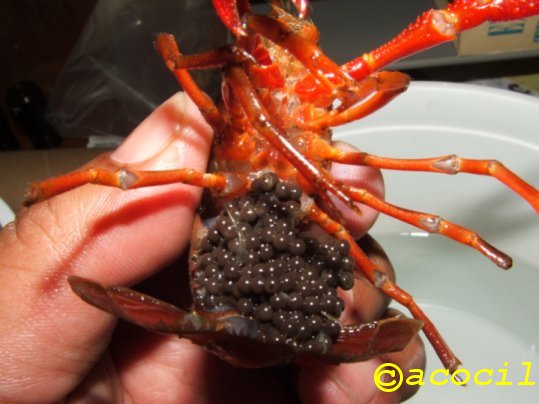
Do crayfish show any maternal behavior?
The parental
care is provided exclusively by females. If their role is threatened they will engage in intense confrontational situations.
If the juvenile are not provided with enough shelter (places they can hide) then you can choose to isolate them from that
particular environment.
I have seen only one female dying the week after
the hatching of new juveniles. Surprisingly, the little crayfish were reluctant to leave the death mother’s body.
I
will say that it is very unusual that females die after the spawning or the hatching of the eggs. But it could happen. There
is some maternal behavior involved for the protection and development of the new crayfish. After two or three weeks following
the hatching, juvenile crayfish will start wandering around becoming independent from the mother. Anyway, no need to separate
the 'babies' from the mother. But make sure the mother has enough places to go into hiding. Wait until the juveniles start
wandering around, which usually takes place two or three weeks after hatching, then you could decide if you would like to
have them isolated from their mother and other crayfish.
Is there a age limit for breeding? Should it be equal numbers of males
and females in each tank?
These are two very interesting, needless to say very hard questions to answer. Crayfish
could reproduce seasonally depending on where in the world they are living. I guess it is sort of fair to say that crayfish
will reproduce “more” during the first year after reaching sexual maturity. This is when they are sexually “vigorous”
so to speak. However, crayfish present two reproductive forms. I will try to explain below what it means to be in either of
the forms (in terms of reproduction).
First, let me tell you that since crayfish are not monogamous, I think that you
might want to have more females than males in a pond, tank or any other container. By doing that you will be increasing the
chances of finding females in berry (with a clutch of eggs in the abdomen). However, with some exceptions, every time I go
out in the field to sample wild crayfish, the majority of the crayfish I catch are males. Why? I don’t know at this
moment.
Of oxygen and other things:
Think about a river or lake. Are they half full or half empty? You got it! Sometimes they
have more water and sometimes less. With some exceptions, crayfish live inside the water all the time. They have especial
structures (gills) to breathe the oxygen out of the water. If you can guarantee enough oxygen supply for the crayfish, the
height of the water level does not matter much. They can also take oxygen from the air, but their gills need to remain wet
to work well. When you see a crayfish going sideways at the ridge of the water level it only means that it is trying to oxygenate
its gills. Whatever you do, do not overfeed if dealing with small volumes of water, others creatures and chemical reactions
going on in the water are also responsible for oxygen depletion.
Crayfish are very sensitive to the presence of other
crayfish. Most species are semi-social and tolerate living in groups, but there will be a lot of competence going on at all
times. If the space is limited, or there is limited ‘amounts’ of other resources for that matter, crayfish could
engage in forceful battles that might end with injury or even death of one of the contestants.
Crayfish are also very vulnerable
during the molting process, right before, during, and after it. If they are in a reduced space area or if there are not hiding
places, cannibalism takes place and that could explain your death crayfish every morning.
Eggs should remain attached to
the female’s abdomen. Yes, they will complete their development there until hatching and a little bit more, like two
more weeks after hatching. Occasionally, some eggs will detach from the female, but they are not likely to survive. It is
not clear exactly what the mother provides other than protection from predators, but it might be that she will keep the embryos
aerated as well as clean of parasites during their development, which takes usually a month or so.
Why are the 'claws' important for the crayfish?
Claws are the main crayfish 'weapons' for fighting and defense. They are also
use for locomotion, food gathering and mating. The technical word for the claws is 'chelae'. Originally, claws
were (are) the first pair of pereiopods (walking legs). Now they are multi-functional structures. Learn more about claws and
fighting behavior by clicking on the picture below:
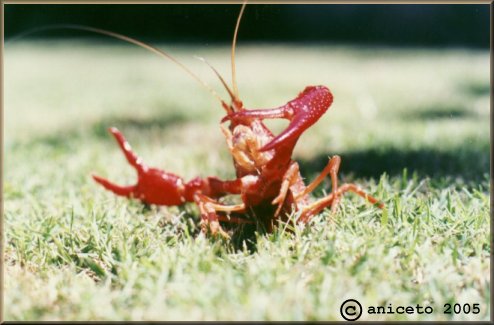
Why is it important to keep the 'exhubia' together with the recent moult crayfish?
Crayfish are arthropods (animals with articulated legs) that grow by the process
known as moulting. Crayfish will eat the old exoskeleton. So, to leave it in the container it may be a good idea.
I am
not sure about lobsters, but they might show the same behavior pattern.
Crayfish are also cannibalistic; they could eat
the recently molted one.


Can I or anybody go out in the field and catch crayfish out of the water?
Believe it or not most crayfish have been placed in national and international
endanger species lists. It would be advisable to check your local agencies listings before trying to get them out of their
environments. Also, when you get animals from pet stores or aquariums just because you pay a price for them that does not
makes it legal. Dealing with foreign specimens makes it worst.
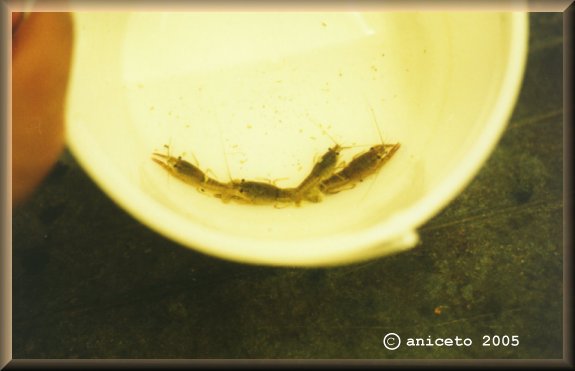
|



